Use Good Compaction to Extend Pavement Service Life
BY Courtney Jones and Nam Tran
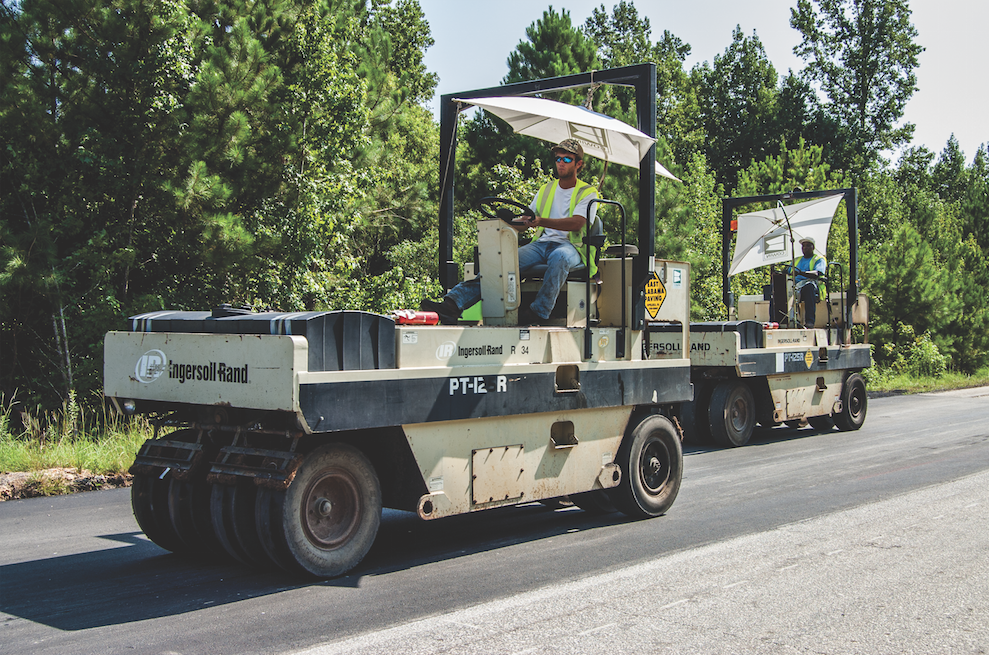
As stated by R. Bruce Noel at the 1977 annual meeting of the Association of Asphalt Paving Technologists (AAPT), “The single most important construction control that will provide for long-term serviceability is compaction.” When compaction is enhanced, in-place density can be optimized, thereby improving durability and extending pavement service life.
A review of several past studies clearly shows the effect of reduced air voids on improved fatigue and rutting performance of asphalt mixes, both in the lab and in the field. Depending on mix type and experiment (which included constant-stress bending beam fatigue testing and field results from WesTrack), fatigue performance improved between 8.2 and 43.8 percent with a 1 percent decrease in air voids. Likewise, based on rutting results from WesTrack and lab flow number testing, rutting resistance improved by 7.3 to 66.3 percent with a 1 percent decrease in air voids depending on mix type and analysis. The results of a recent study conducted for the New Jersey Department of Transportation, which included data from 55 pavement sections, also suggest that a 1 percent decrease in in-place air voids increases asphalt mix service life by conservatively 10 percent.
For illustration purposes, consider the effect of increasing the in-place density of an asphalt overlay from 92 to 93 percent. The service life will increase by conservatively 10 percent, meaning that the overlay will be expected to last 20 years instead of 18. Figure 1 shows a life cycle cost analysis (LCCA) of the two alternatives with an analysis period of 20 years.

Figure 1. Life Cycle Cost Analysis (per $1,000)
For alternative 1, the initial construction cost of the overlay compacted to 93 percent density is assumed to be $1,000,000. The cost of providing a 1 percent increase in in-place density is assumed to be negligible, so the same initial cost is used for both alternatives. At year 20, the overlay in alternative 1 will be replaced, thus, the salvage value is 0 and the net present value (NPV) is $1,000,000. For alternative 2, in which the overlay is compacted to 92 percent density, the overlay will be replaced at year 18 at a future cost of $1,000,000. The new overlay (also expected to last 18 years) will have a remaining life of 16 years at the end of the 20-year analysis period and a prorated salvage value of $889,000. The replacement cost and salvage value is discounted to year 0 at a real discount rate of 4 percent, resulting in an NPV of $1,088,000 for alternative 2. Thus, on a $1,000,000 paving project, an NPV cost savings of $88,000 (or 8.8 percent) will be realized simply by increasing the in-place density requirement by 1 percent.
Because in-place density is such an important factor affecting long-term pavement performance, it is a key pay factor for acceptance in most states. The most common minimum in-place density criterion is 92 percent of theoretical maximum specific gravity (Gmm). Most density criteria are based on what could be achieved in the past and are not necessarily optimal in-place densities. Significant advances have been made in asphalt design and construction technology in recent years, making it possible to achieve greater densities.
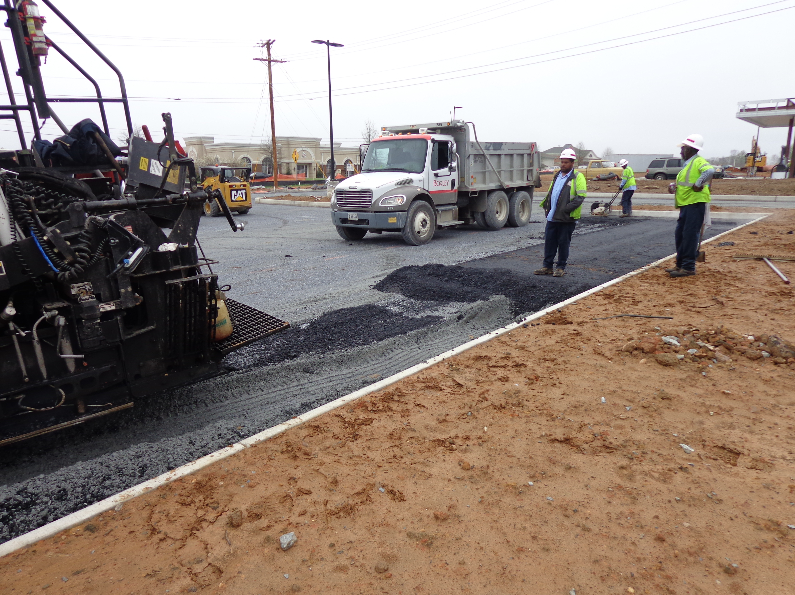
In these pictures, you can see how the paver has sunk into a subgrade made too soft by recent rains and poor drainage. The paving crew cannot correct this type of situation well enough with rock and dirt to achieve good compaction results in the final pavement layer. The subgrade must be allowed to dry and a better drainage system needs to be constructed. In this instance, the crew made the wise decision to work a different area of the large parking lot while this section dried and the subgrade was repaired. Photos courtesy John Ball, Top Quality Paving and Training, Manchester, N.H.
Because higher in-place densities can result in significant cost savings due to extended pavement service life, highway agencies may consider increasing minimum density requirements. Higher in-place densities can be achievable by following best practices and implementing new technologies and techniques. For guidance on best practices, a recently presented webinar entitled “Best Practices in Compaction” is available for download (free for NAPA members) at store.asphaltpavement.org.
Warm-mix asphalt (WMA) technologies, including asphalt foaming technologies and chemical and organic additives, can aid in compaction. WMA improves the workability of the asphalt binder and allows for mix production at temperatures 25 to 90°F lower than HMA. A review of several regionally diverse studies comparing the quality of WMA and HMA mixes showed that similar in-place densities can be achieved with WMA at considerably lower compaction temperatures. Using WMA can result in improved in-place densities for projects with extended haul times as well as cold-weather projects.
Intelligent compaction (IC) is another technology that can help improve in-place densities. With the IC system, vibratory rollers are equipped with GPS-based mapping along with instrumentation that provides real-time monitoring of compaction and material stiffness. This allows adjustments to be made as needed to reach optimum density and uniform coverage while eliminating unnecessary roller passes and making the process more efficient. Optional feedback controls can also make continuous adjustments to the force and frequency of the roller drum. IC is a potentially useful tool for quality control, but it is not a replacement for acceptance testing, as the relationship between IC stiffness measurements and in-place density is inconsistent (See Sidebar, Hamm Operators See Their Progress).
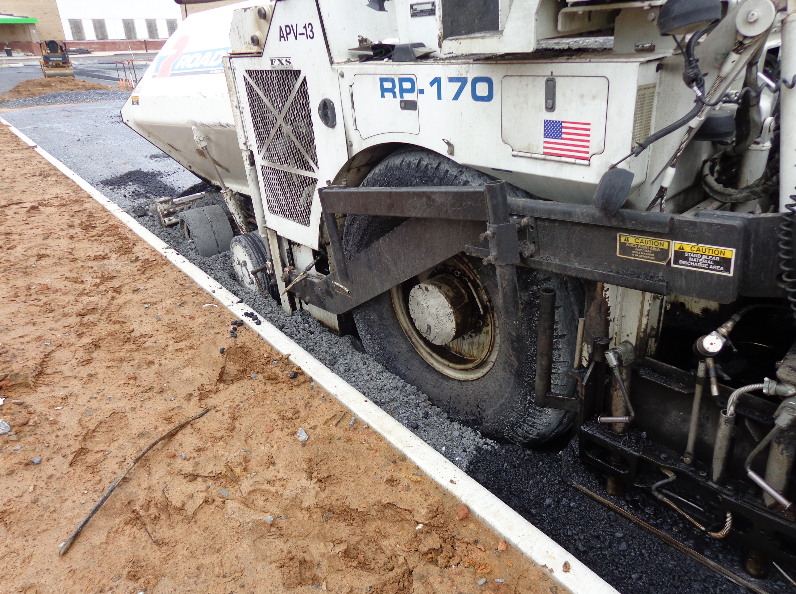
In these pictures, you can see how the paver has sunk into a subgrade made too soft by recent rains and poor drainage. The paving crew cannot correct this type of situation well enough with rock and dirt to achieve good compaction results in the final pavement layer. The subgrade must be allowed to dry and a better drainage system needs to be constructed. In this instance, the crew made the wise decision to work a different area of the large parking lot while this section dried and the subgrade was repaired. Photos courtesy John Ball, Top Quality Paving and Training, Manchester, N.H.
When premature pavement failures occur, they are often caused by low density at longitudinal joints. Well-constructed longitudinal joints require very close attention to detail during the paving and compaction process (See Sidebar, Willow Offers Compaction Action for Building Joints). During compaction of the first lane, the roller should overhang the unconfined edge by six inches. When placing the adjacent lane, there should be an overlap of one to one-and-a-half inches, and it is crucial that there is sufficient material (about 20 percent additional thickness) to allow for proper compaction. This lane should be compacted from the hot side with the roller drum extending six inches over the joint. In recent years, several other techniques have been used to improve longitudinal joints, including the use of a tapered or wedge joint, which also eases the vertical transition between lanes during construction. Also, two methods that may help bonding occur between the cold and hot edges of the joint are tack coat application on the joint and the use of infrared heaters to reheat the cold edge.
Minor increases in density are feasible and provide a cost-effective means of improving pavement service life. For increased density specs to have maximum benefit and effectiveness, agencies should consider the following:
- Appropriate project selection. When choosing projects for implementing higher in-place density requirements, evaluate the underlying base. If the base is weak, optimal compaction will be difficult to achieve.
- Lift thickness. Increased lift thickness can improve compaction effectiveness because the mat cools more slowly, allowing more time for compaction. Also, lift thickness should be sufficient to allow for the re-orientation of aggregate particles during compaction. Fine-graded mixes should have a minimum lift thickness of three times the nominal maximum aggregate size (NMAS). For coarse-graded mixes, minimum lift thickness should be four times the NMAS.
- Mix design. Appropriate binder content should be selected for the desired in-place air voids. Gradation, binder content, and volumetric properties such as air voids and voids in mineral aggregate (VMA) can influence compactability of a mix and should be carefully controlled during production to minimize variability.
- Criteria. Appropriate measures of field compaction should be used for acceptance requirements. Comparing in-place density with theoretical maximum density allows less potential for variability in field compaction than comparison with density of lab samples.
- Performance incentives. As shown in the LCCA example, in-place density has a significant economic impact on highway agencies. Thus, performance incentives should be established to encourage enhanced compaction and achieving higher in-place density.
The full literature review is available for download free of charge on the NCAT website as NCAT Report 16-02 at http://ncat.us/info-pubs/technical-reports.
—
Hamm Operators See Their Progress
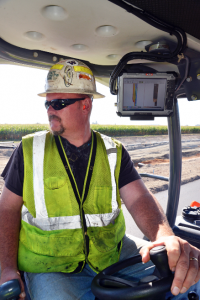
At the core of the Hamm IC system is the HCQ GPS Navigator, a touch-screen PC with USB interface, which provides processing power as well as a monitor and data storage facilities.
Intelligent compaction—as it applies to asphalt and soil compaction—describes compaction of road materials using modern vibratory rollers equipped with an integrated measurement system, an onboard computer reporting system, global positioning system (GPS) based mapping, and optional feedback control, according to Federal Highway Administration consultant The Transtec Group, Austin.
With the HCQ Navigator, Hamm was one of the first manufacturers to launch a compaction measurement and documentation system. The system links measurement data from various sensors on the rollers with the position information obtained via GNSS (global navigation satellite system) receivers. The HCQ Navigator uses these data to determine the progress of compaction for all rollers in a group in real time. A compaction map visualizes the status for the roller drivers and site management.
“HCQ Premium is the latest intelligent compaction system from Hamm,” Tim Kowalski, Hamm applications support manager, said. “We have upgraded the system to provide pre-installation kits for any soil or HD+ Hamm roller, if not already factory-equipped. This…is a Hamm exclusive for our H i-series soil compactors and HD+ and HD+ i-series asphalt rollers.”
At the core of the application is a panel touch-screen PC with USB interface. This computer provides processing power as well as a monitor and data storage facilities. It is based on military standards, has a fully enclosed metal case, and is protected against water and vibrations.
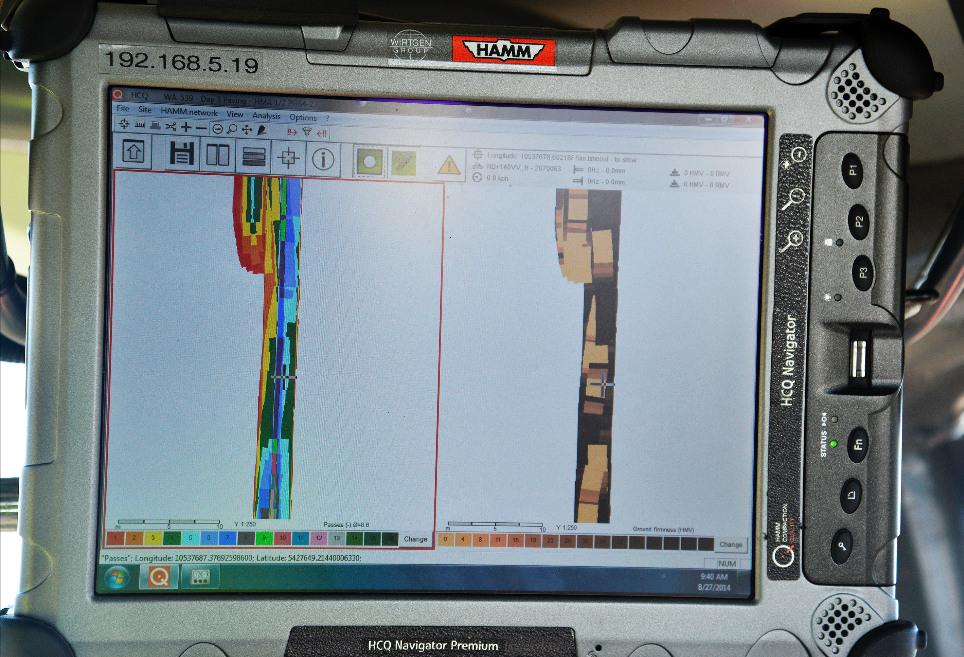
Rollers equipped with the Hamm Compaction Quality (HCQ) system maintain a continuous record of color-coded plots, allowing the user to view the precise location of the roller, the number of roller passes (on the left screen), and material stiffness measurements (HMV, on the right screen).
The HCQ Indicator measures the stiffness of asphalt or soil beneath the drum, and consists of an accelerometer mounted on the drum framework inside the rubber buffers, a processor and a display. With the accelerometer mounted this way, users get the actual reaction of the drum against the material it is trying to compact. Based on these data, the processor calculates the HMV (Hamm measurement value)—indicating the degree of compaction as a stiffness measurement derived from the measured signals—and displays this value to the driver in the cab.
During the compaction process, the panel PC shows the operator how stiffness is progressing. Separate graphics depict, for example, the number of completed passes or the current asphalt temperature, and the operator has the ability to monitor two of these functions simultaneously on the split screen.
—
Willow Offers Compaction Action for Building Joints
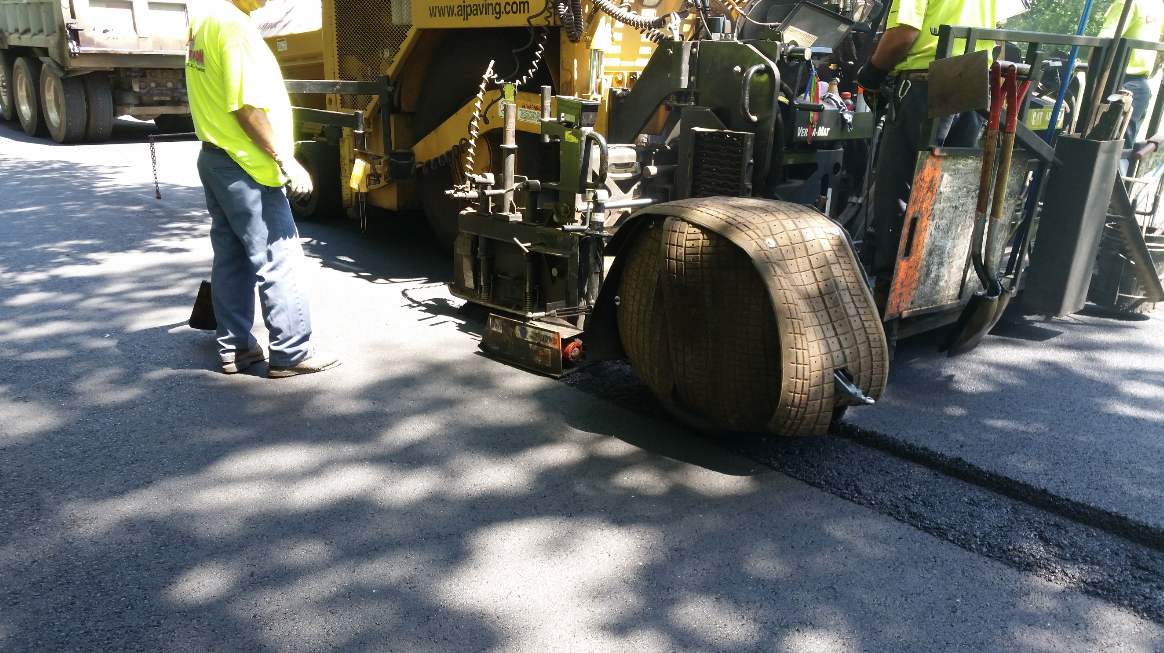
The Notch Wedge Pneumatic Roller weighs 400 pounds fully ballasted and includes rubber skirting to hold in heat to keep the rubber tire warm.
Willow Designs, East Berlin, Pa., has a solution for notch wedge joint compaction. According to Jerod Willow, proprietor, he developed this new product specifically because contractors in Connecticut are required by Connecticut DOT to have a secondary compaction of the notch wedge joint.
The company’s Notch Wedge Pneumatic Roller is a wide rubber tire roller designed to work in conjunction with the company’s notch wedge joint building system. It is pulled by a rigid tow arm directly behind the joint maker. Its lateral steering adjustment lets the operator align the notch wedge roller with the notch wedge joint being produced by the paver. Its precision adjusting allows the sidewall of the notch wedge pneumatic rubber tire to compact and stabilize the vertical notch of the joint.
“Using the notch wedge pneumatic roller will improve stability in an open notch wedge joint during compaction and will reduce material raveling at the bottom of a notch wedge during the construction process,” Willow said. “It gives the contractor the last piece of the puzzle to yield the best joint density possible.”
For more information, check out the HHIW feature.

